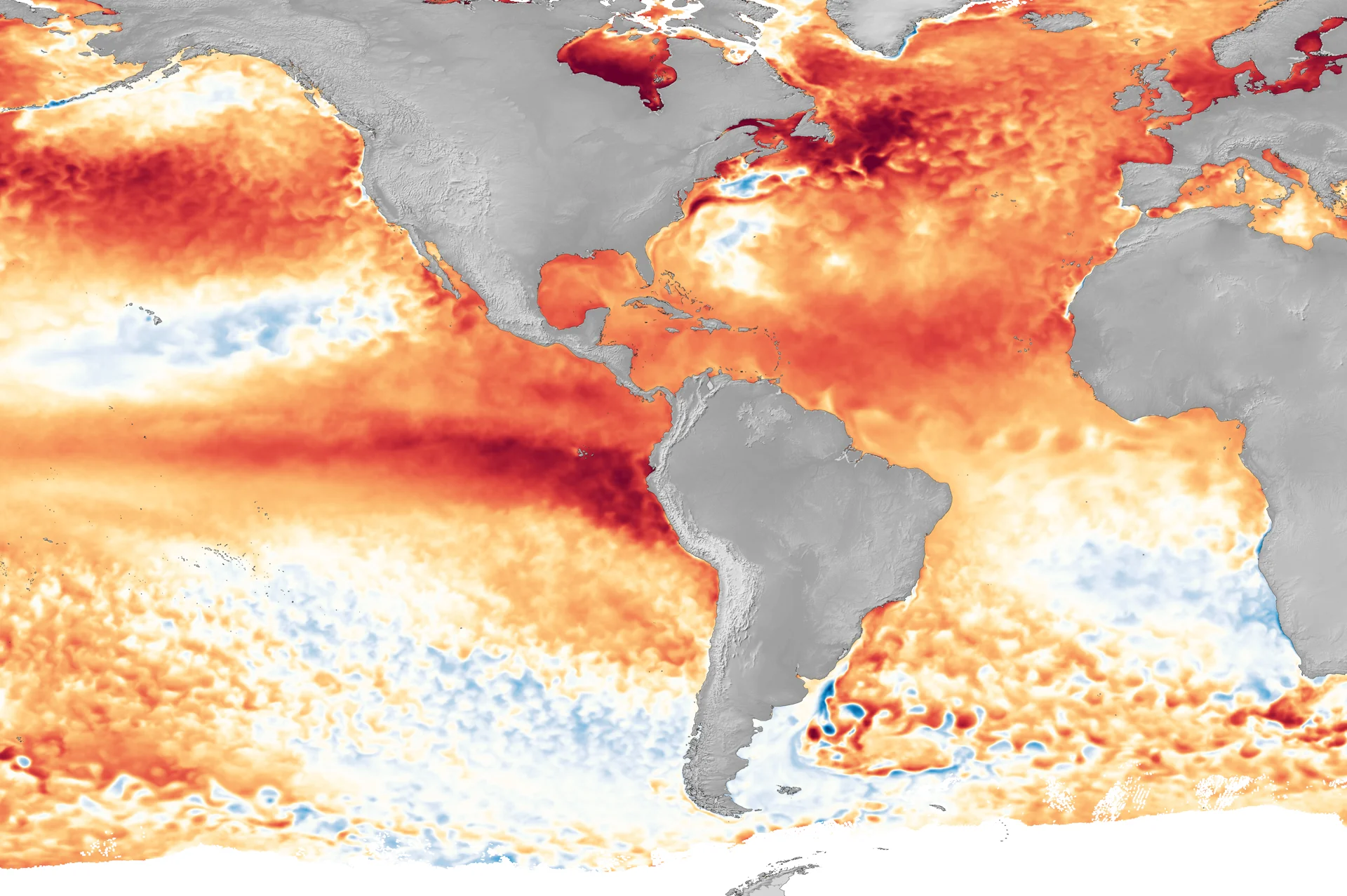
A ‘historically strong’ El Niño is possible heading into winter
This year’s El Niño has a chance to join memorable events like 1997-98 and 2015-16 if current warming trends continue, forecasters warned
El Niño is here to stay through the winter months, forecasters announced this week, and there’s a decent chance that it’ll stick around to influence our weather straight into next spring.
Not only will we head into the cold season with this pattern of above-normal water temperatures in the eastern Pacific Ocean, but forecasters said there’s a not-insignificant chance that this El Niño could grow ‘historically strong’ before long.
Strong El Niño events can have major repercussions on global weather patterns, and the unprecedented ocean temperatures around the world could make this El Niño unlike any we’ve seen before.
DON’T MISS: A fickle fall: Strengthening El Niño triggers a two-faced season
El Niño has a powerful effect on global weather patterns
An El Niño event affects a relatively small part of the eastern Pacific Ocean, but it’s an oceanic fever with ramifications felt around the world.
Winds usually blow across the Pacific Ocean from east to west, pushing warm surface water toward Australia while allowing cold waters from the dark depths to rise toward the surface off the west coast of South America.
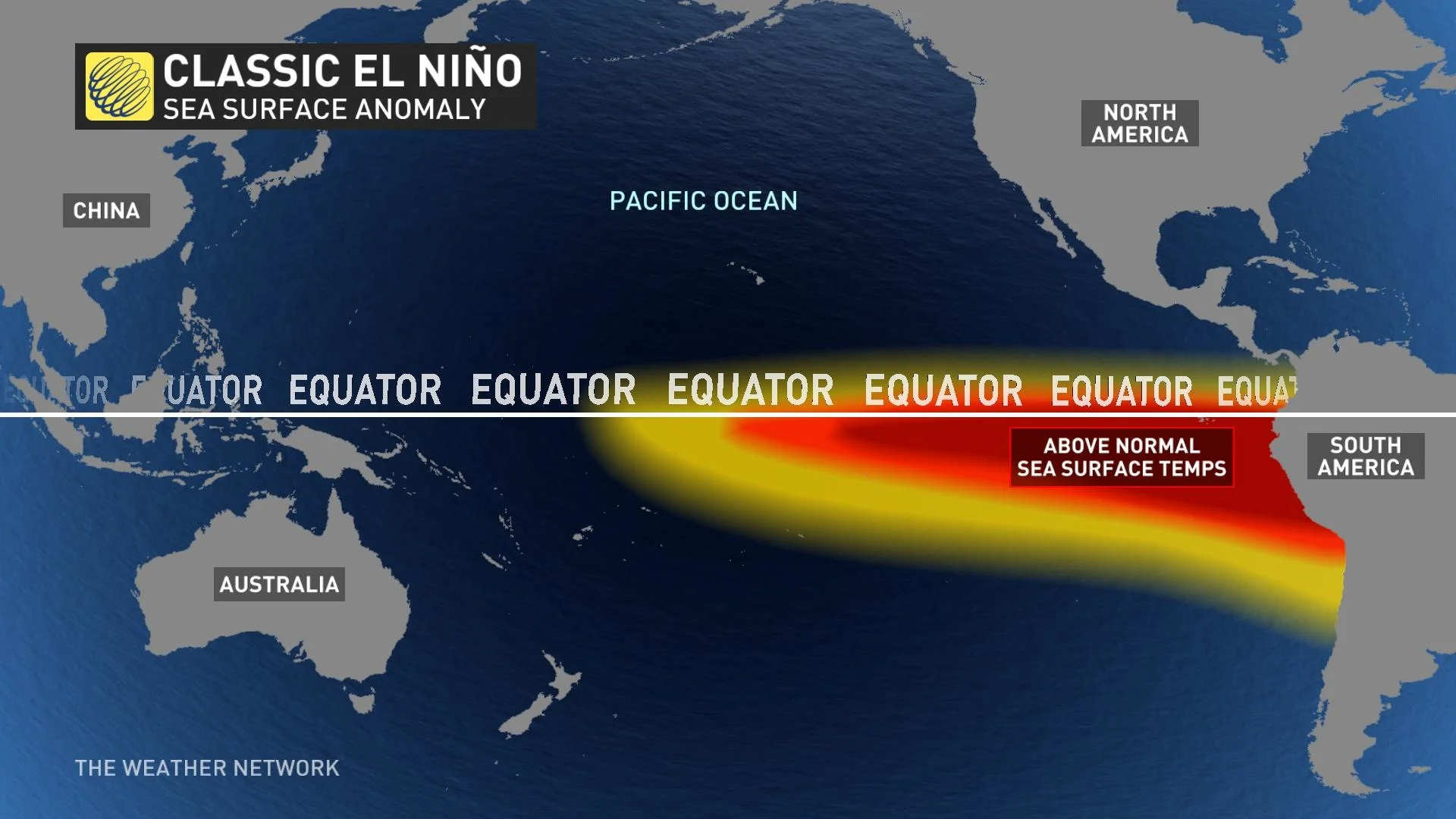
These winds occasionally break down or even change direction, allowing that warm water pooled up by Australia to surge back toward the east, raising water temperatures in the eastern Pacific around the equator.
Even though temperature changes of an El Niño event are relatively minuscule—usually between 0.5°C and 2.0°C—it’s akin to a fever in the human body. Warmer-than-usual water temperatures here can trigger a cascade of changes throughout the atmosphere that reach from New Zealand to Newfoundland.
SEE ALSO: Migrating monarch's face unique challenges this year
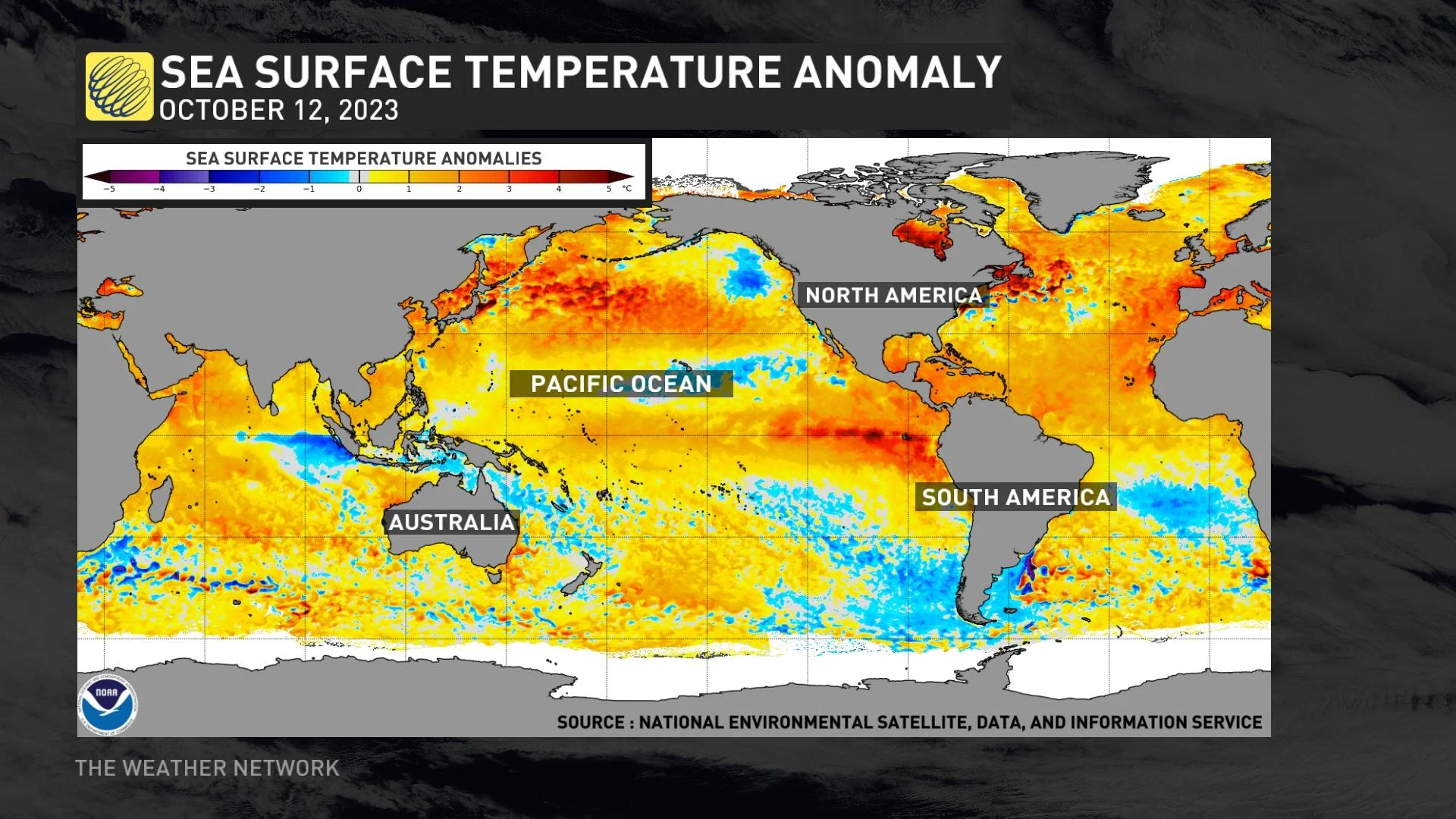
El Niño is here, and it’s getting stronger
The latest update from the U.S. Climate Prediction Center (CPC) shows that the eastern Pacific Ocean is engulfed in El Niño conditions.
Sea surface temperatures are coming in 1.5°C above seasonal in a portion of the ocean particularly capable of supporting major shifts in global weather patterns. Parts of the ocean are even more than 2.0°C warmer than usual, and water temperatures are nearly 1.0°C above normal deep below the ocean’s surface.
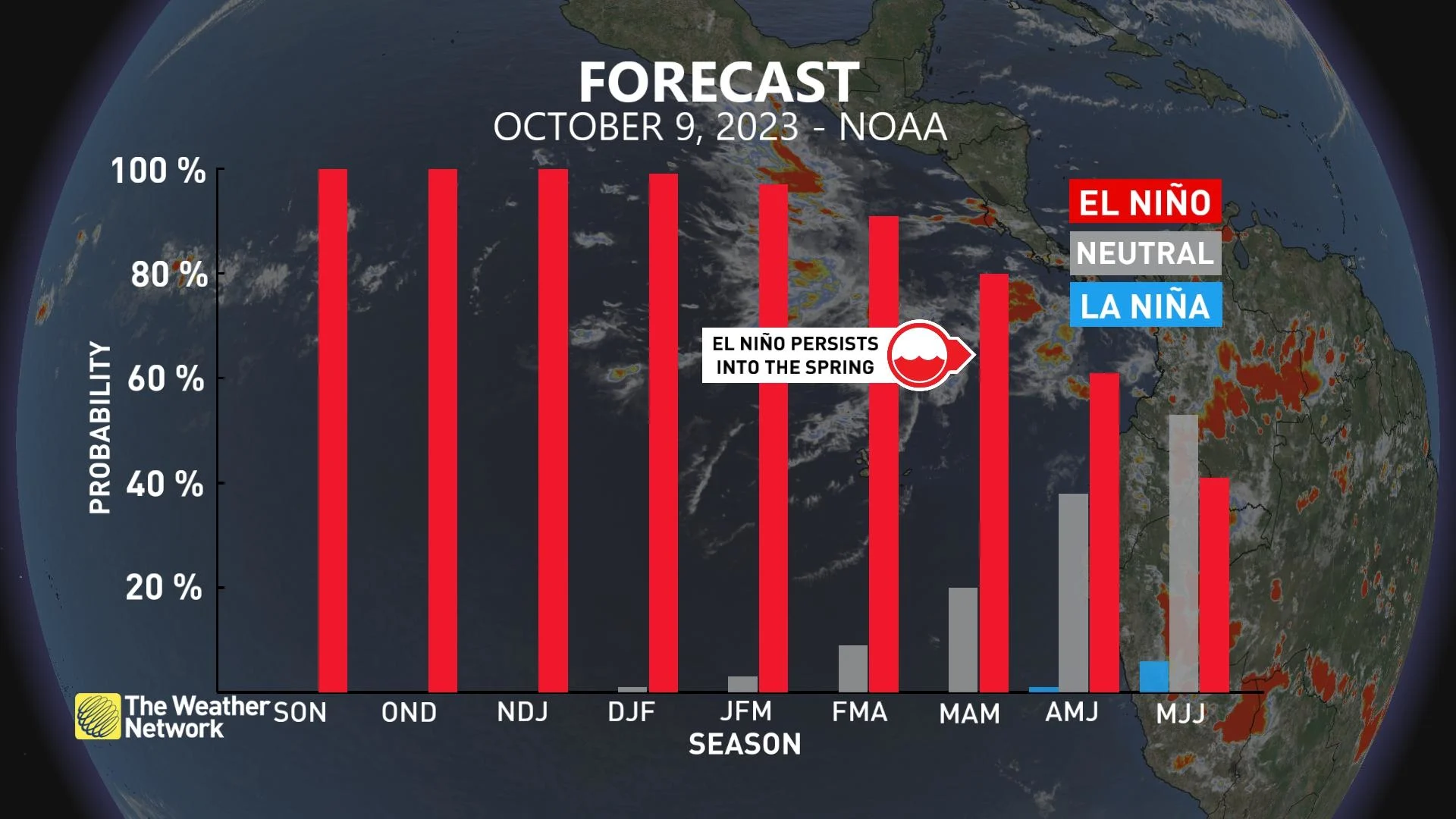
Given these toasty current temperatures and weather models reinforcing the ongoing pattern, forecasters have near-certain confidence that El Niño will persist through the winter months.
Experts also said there’s an 80 percent chance that this El Niño event will continue into the heart of spring.
But it’s not just the duration of this El Niño that’ll have lasting effects on our weather across the northern hemisphere—it’s also the fact that it could grow into one of the strongest events on record.
WATCH: Canada's 2023 Fall Forecast: Is a 'super' El Niño possible?
Forecasters see the potential for a ‘historically strong’ El Nino
Forecasters raised eyebrows in their mid-October update by raising the prospect of a ‘historically strong’ event in the months ahead.
CPC forecasters say there’s a 30 percent chance that we’ll endure some of the warmest temperature anomalies ever observed in this region of the eastern Pacific, making for a high-end El Niño that rivals the historic events witnessed in 1997-98 and 2015-16.
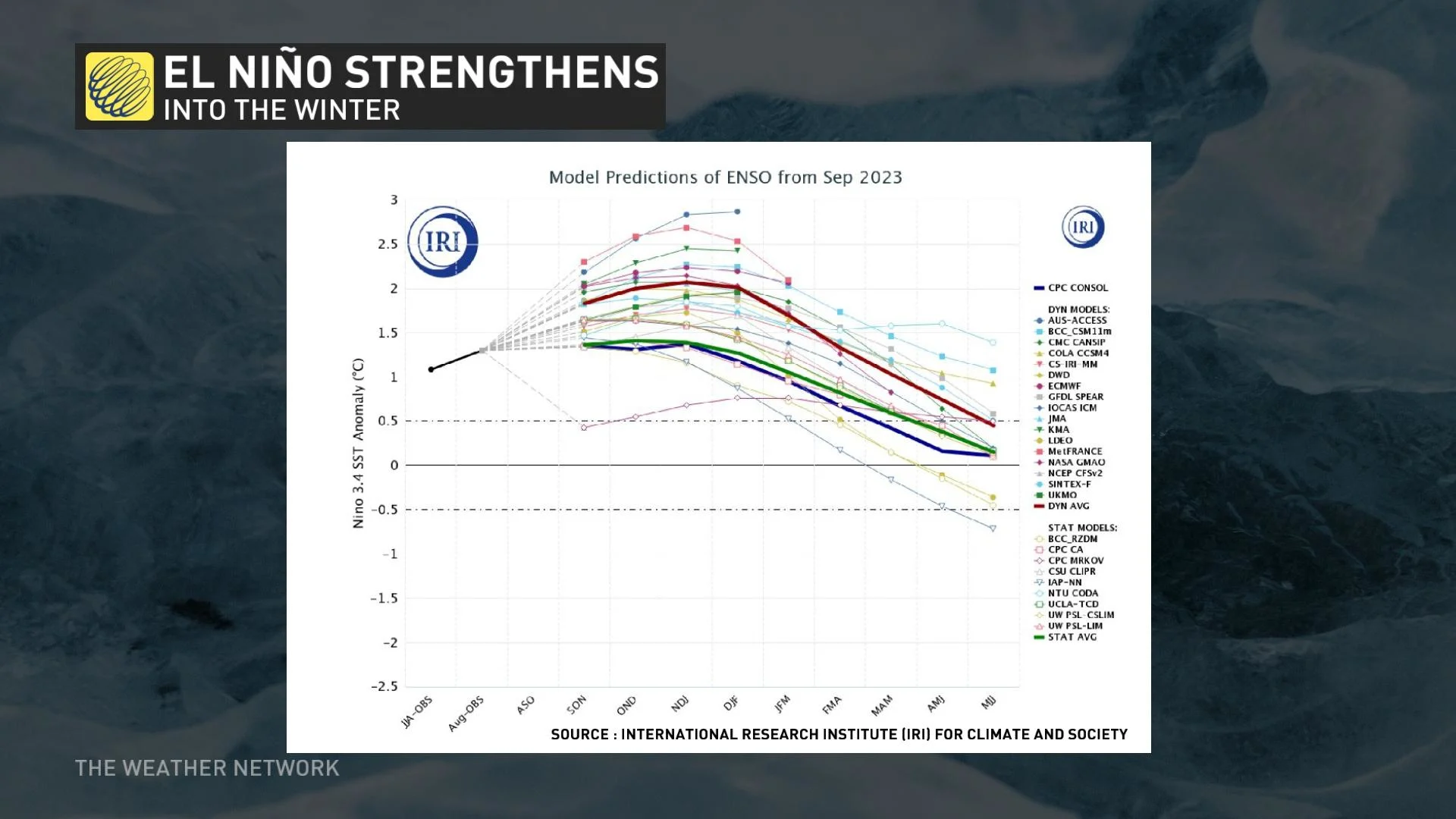
One of the highest-impact El Niños on record unfolded during the winter of 1997-98. Among many global impacts, a barrage of storms unleashed deadly flooding in California, bringing Los Angeles and San Francisco one of their wettest years ever measured. Global losses totalled more than $5.7 trillion USD, per one analysis by experts at Dartmouth College.
An El Niño that spanned much of 2015 and 2016 created such a large and intense footprint in the Pacific Ocean that one expert gave it the tongue-in-cheek nickname “Godzilla El Niño.” The long-lasting event spawned numerous tropical storms and hurricanes close to Hawaii and triggered a devastating drought across the Caribbean.
All events are different, and we’re in uncharted territory
Nature is driven by patterns, and much of predicting the future involves looking to the past for clues about what we can expect in the weeks and months ahead.
While most El Niño events have many similarities, each event is also unique in how it affects the atmosphere. Those two historic seasons saw very different outcomes in some areas.
Although the record-setting season in 1997-98 hammered California with an onslaught of rain, the major El Niño of 2015-16 saw few storms hit the U.S. West Coast, extending California’s historic drought for another two years.
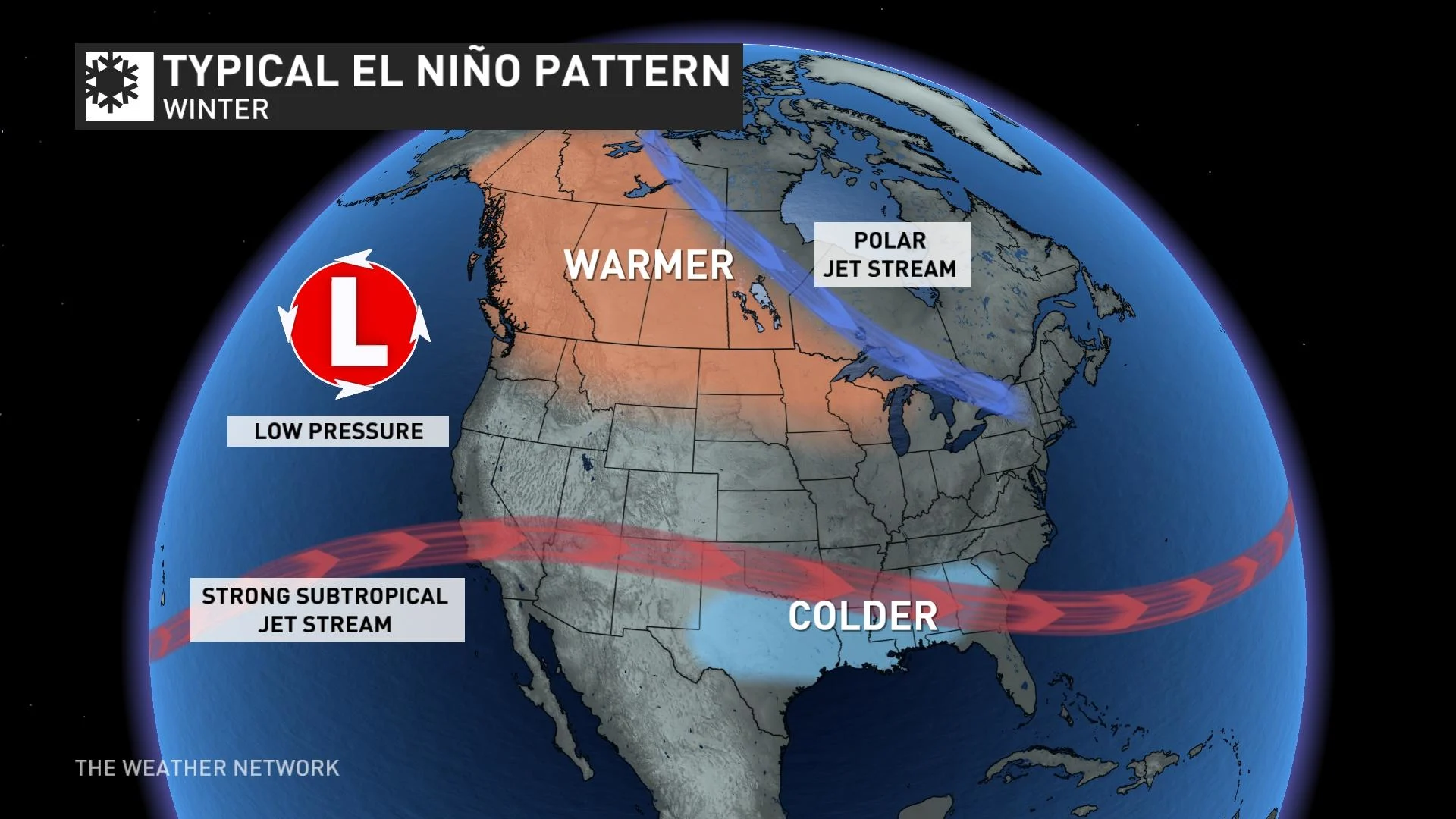
Much of predicting the future involves looking to the past for clues about what we can expect in the weeks and months ahead. History provides us plenty of clues as to what we can expect in the months ahead as the eastern Pacific Ocean continues its streak of abnormal warmth.
MUST SEE: Why El Niño won't slow down the bustling Atlantic hurricane season
But, as we’ve seen before, this year will play out on its own terms with its own quirks. It’s not just the Pacific Ocean that’s unusually warm right now—oceans around the world are facing unprecedented warmth this year, which is a major wild card for this upcoming season.
After all, most El Niño years see below-average hurricane activity in the Atlantic. An average year would see 14 named storms, and some El Niño seasons have only produced half as many storms.
This year, however, we’ve seen 19 named storms in the Atlantic, including three major hurricanes in Franklin, Idalia, and Lee—the latter of which became just the 29th scale-topping Category 5 storm in the Atlantic since the satellite era began in 1960.
Header image courtesy of NOAA.










